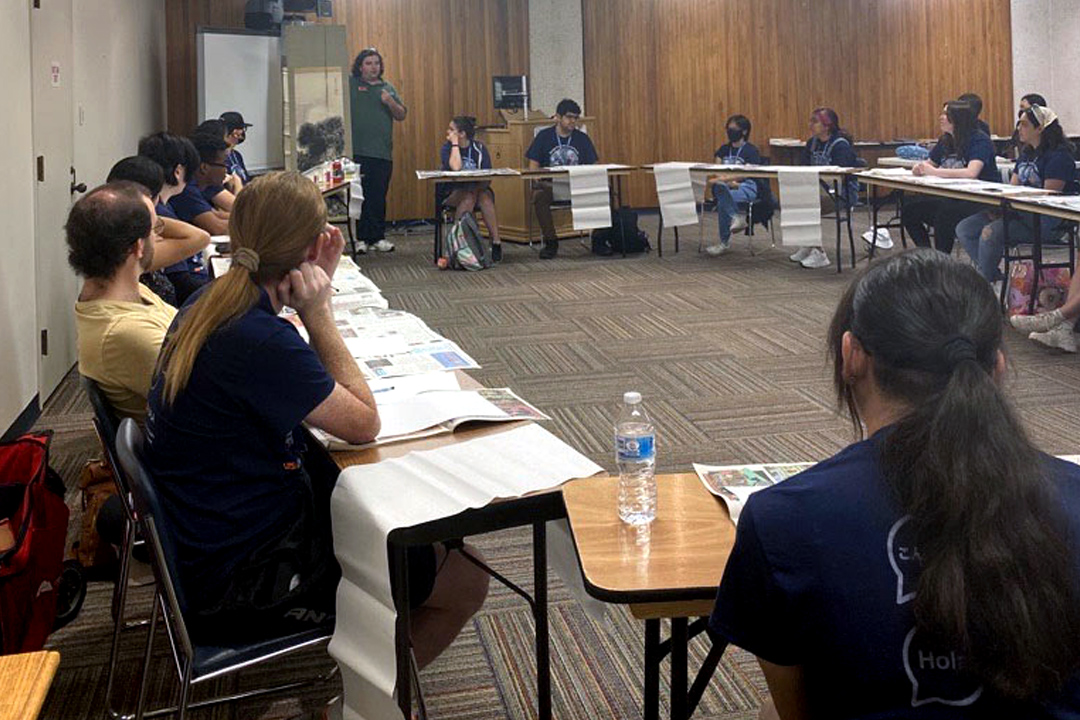Many academic institutions confronted with the COVID-19 Pandemic, health, and safety measures had to resort to canceling study abroad opportunities. Since intensive language-immersive programs were unavailable to students, UTSA sought a way to create similar experiences at home.
The UTSA Global Initiatives office and Department of Modern Languages Literatures responded, forming the UTSA San Antonio Language Academy (SALA). The program is funded in part by a $500,000 grant from the National Endowment for the Humanities American Rescue Plan to support the economic recovery of cultural and educational institutions.
Through the foresight of SALA representatives, visits to the UTSA Institute of Texan Cultures (ITC) with its many exhibits on a variety of cultures became a component of the program, helping to expand student learning experiences. This past May, some 20 SALA students visited the ITC to amplify their understanding of the Japanese language, cultures, and history in Texas.
“The ITC exhibit floor is a wealth of information on several cultural groups, including the Japanese,” said Nansy “Liz” Lopez Gutierrez. “Our Japanese Texans exhibit talks about some of the early families that came to Texas and established farming communities. We also have details on Japanese Texans during World War II, and some of the difficulties they faced.”
The SALA visit included viewing objects from the Japanese collection, learning their origins, and how they were used in everyday life. They visited the Japanese Tea Garden later in the day, where they continued their studies by learning about San Antonio’s Jingu family.
“We are so excited to collaborate with the ITC to provide our community members with global perspectives while helping them achieve their fundamental goal of improving a language and learning about another culture right here in San Antonio,” said Lisa Montoya, UTSA vice provost for global initiatives, senior international officer, and co-principal investigator of the SALA grant.
A special component of the SALA visit to ITC was a workshop on traditional Japanese Sumi Ink painting with Richard Hafemeister, director of operations and educator at the Texas State Museum of Asian Cultures in Corpus Christi.
“Sumi-e painting is a traditional Japanese art that works well for these types of classes for two main reasons,” said Hafemeister. “Firstly, it is a chance to gain an appreciation of the arts and cultures of Japan overall. Secondly, it is an opportunity to expose people to a new art skill that they mostly likely would not have had a chance to learn otherwise, with both broadening their horizons and giving students new confidence.”
In addition to the enrichment opportunity, the ITC/SALA collaboration kick-started an effort to refresh the Japanese Texans exhibit with new content, and prepare an in-depth digital resource on Japanese Texans, the way the institute approached its sharecropper house.
“These are the types of relationships we’ve been wanting to establish at the ITC for such a long time,” said Lopez. “We’re getting the opportunity to connect with academic components of the university and expand knowledge beyond textbooks and lectures. These relationships are catalysts to new projects, research, and expanding knowledge that will benefit students and visitors alike.
For more information on the San Antonio Language Academy, visit UTSA SALA website. To plan an adult group tour to the ITC, access the tour request form at our Adult Group Tours/ page.
